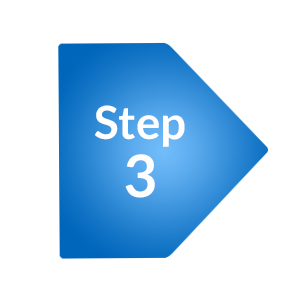
So, you want to build your mailing list. And not just build it, but also take steps to make its members engaged and responsive. You know authenticity, readership, and engagement are crucial to growing your business.
But.
You’re just starting out, and you don’t have any contacts! Even if you did, you aren’t sure if it’s okay to start contacting them. And even if it was okay, you don’t know what to say to them.
Hold it right there.
Help is here!
The contact list you create in your business is a gold mine. You should treat it as such: mindfully create it, cultivate it, nurture it, and protect it. Fortunately, I’m going to show you how.
First of all, chances are you have more contacts than you realize. And there is a way to have them “opt-in,” officially, so you can start sending them emails. And … you guessed it: I’m going to give you a template for what to say when you reach out!
Ready? Let’s do this.
First and foremost, you have more contacts than you realize. They’re just scattered across the many facets of your life and the many platforms on which you’ve collected them. From your high school and college classmates to your colleagues from previous jobs, to all the friends you’ve made along the way, it’s likely that your contact list is already pretty decent.
As technology has evolved in the past couple of decades, you’ve probably stored your contacts in different places: that old Rolodex, Outlook, your personal email account, your smartphone, your address book … you get the picture.
 Collect Your Contacts and Organize Them into a Central Platform.
Collect Your Contacts and Organize Them into a Central Platform.
This is the groundwork. Go through Outlook, your smart phone, Facebook, LinkedIn, your business cards, old email accounts, maybe even old spreadsheets. Enter ALL your contacts into one central list.
Once you see this new, central list, you may be surprised that you have several hundred contacts!
The problem: they’re not official business contacts. They may be family, friends, colleagues, co-workers, or people you’ve encountered at various events.
A quick note here: even though you may be thinking these people don’t necessarily seem like your ideal clients, don’t be too quick to cull them out! Your existing contacts may not be your ideal clients, but they could provide a stepping-stone to people who are.
Ok, so you have your list of contacts. But none of them have officially opted in (signed up) to receive emails from you about the services you offer through your business.
So, let’s talk about the next step.
 Ask for Permission to Send Them Emails.
Ask for Permission to Send Them Emails.
Once you’ve got your contacts organized into one big email list, it’s time to let them know about your transition into starting your coaching business.
I call this notification the “Dear Jane” letter.
It’s a quick and easy way to get in touch with your existing contacts and give them the opportunity to opt in to your business mailing list.
It serves a secondary purpose, too, as a networking tool: your contacts can refer their own contacts to you, now that they know what you’re up to.
The “Dear Jane” letter includes seven components:
- The positioning and personalization statement. This is where you connect with those you know in a simple and personal manner.
- Your announcement. Let readers know you’re launching your coaching business, and tell them about your specialty.
- Your 5-Part Connection Conversation to create engaging dialog and response.
- An invitation to opt in and receive your lead generation magnet (also known as your free gift).
- The Ask. Ask directly if they are interested in what you’re up to or if they know someone who is. Ask for the referral.
- An invite to “Coffee.” Bring it back to a causal connection and show interest in what THEY are up to.
- The opportunity to unsubscribe. Including this option in every email ensures you meet spam regulations.
This “Dear Jane” letter will help you cultivate a specific contact list for your business, full of people who are interested in hearing what you have to say.
 Take the “Quality over Quantity” Approach.
Take the “Quality over Quantity” Approach.
List building is not about getting a name on your contact list for the sake of having a greater number of “subscribers” and the bragging rights that come with that.
(The “Quantity over Quality” approach will get you high unsubscribe rates, frustrated people, and a list that isn’t responsive when you promote your services, events, or programs.)
When you cultivate a list of interested people, you’re then able to communicate the right message to them, quickly, prompting action.
When you share messages, tips, and resources, the members of your list will be more likely to take the next step toward reaching their desired results.
YOUR result: a mailing list that is engaged and responsive … and a business that continues to grow.

Thank you for this Melinda. Love it.
I want to be a coach and a professional athlete….
Congrats on your dreams! AND you’ve come to the right place to fully understand what it means to have your own coaching business!
Thank you greatly!